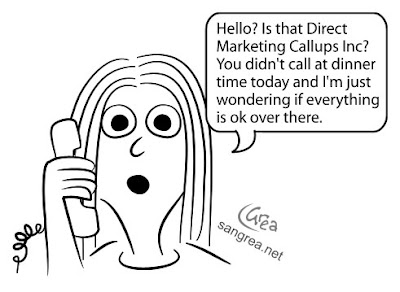
Life is not the moments of breath you take, its the moments that take your breath away. Enjoy every moment of your life ! Start your day here.
Monday, January 31, 2011
Some Important Laws Which Newton Forgot to State

Saturday, January 29, 2011
Thursday, January 27, 2011
Tuesday, January 25, 2011
JakPak: The coat that turns into a tent

Sunday, January 23, 2011
REAL-LIFE SUPERHEROES: 10 People with Incredible Abilities
Friday, January 21, 2011
Profession gags -- just relax
Tuesday, January 18, 2011
What is Globalization? (Just for Fun !)
Sunday, January 16, 2011
How to Tackle Telemarketers

Friday, January 14, 2011
Wednesday, January 12, 2011
The Top Ten Rules of Email Etiquette
A Small but highly useful article by Paula Klee Parish
The below rules need to be remembered by all of us while writing emails....professional and personal!
There is a communication crisis occurring today. With the proliferation of text-speak and 140 character sentences, we have forgotten how to effectively communicate. For example, what happened to the professionally written email to a customer or even a colleague? For that matter, what happened to grammar and proper usage?
With the advent of hand held electronic devices and text messaging, we have somehow allowed ourselves to fall into the trap of “everything for the sake of speed and convenience.” So what happens now? Do we shorten our speech so that we speak in abbreviated words and abbreviated sentences?
I thought this might be a good time to reaffirm some of the basic rules with the focus on writing and responding to E-Mails
To begin with a summary…Treat e-mails the same as a business letter. Include a short greeting [hi], even if the message has been going back and forth for several rounds. Remind employees that, while it is fine to use emotional icons in their personal e-mails, these are far too cute to be included in business e-mails.
I am starting with my own pet-peeve:
1. Read before sending and fix your mistakes.
Every time you send a message with errors in spelling, punctuation, or grammar you are letting people know that you do not care about the quality of your work or the reputation of your organization.
2. Ignore the mistakes of others.
It is petty to criticize mistakes such as incorrect spelling. It can cause an embarrassing situation and/or invite nasty reprisals. Fix the errors before replying or sending the e-mail on to others. Be kind.
3. Do not e-mail when angry or upset.
Take ten and breathe. Remember, perception is subjective. What you perceive may not be what the sender intended. Calm down before responding to a message that offends you.
What you send cannot be taken pack, so wait and then be polite. Avoid accusations and using abusive language. Words such as: please, sorry, and thank you project a positive and productive image.
4. Expect your message to go public.
Private e-mail is an oxymoron. It’s like saying one is a little bit pregnant; it does not happen. Security administrators have access to it, and recipients might send it to others. Keep that in mind when you are writing. Pretend that every e-mail is a memo that might be posted on a bulletin board in the hall of your organization.
5. Send request in time.
When it is necessary to request help or support, or introduce a problem, do not wait until the last minute. Last minute messages frustrate and alienate people. E-mail can take minutes or hours to arrive, so plan ahead.
6. Respond immediately or make a note to respond soon.
Respond to e-mail as you should to phone messages. If you need time to think about your response or time to gather information, let the sender know that you will get back to them.
7. Be Brief.
E-mails have basically replaced memos and letters, but they are getting longer and longer. Use bullets where you can. Keep your message short and to the point. We receive many e-mails each day; we respond faster when messages are brief.
8. If the message must be long, start with requests and guide lines.
We tend to read the first few lines of a message thoroughly and browse through the rest. If you require a quick response, say so in the first few lines. If your message is long, start with a summary paragraph.
9. Write a good subject line.
Let the receiver know what to expect. A good subject line flags interest, and it makes it easier to find days later. The subject line is the true reason you are sending the e-mail.
10. Type like you would a letter.
E-mails can be difficult to read. Use short paragraphs and always put blank lines between paragraphs. Avoid all capital letters [SHOUT], emotional icons [ :) ], unique abbreviations [lol], and excessive punctuation [!!!!]. Yes, I am guilty here too.
When should we not use e-mail?
Either make a phone call of visit in person to talk when:
- Emotions are high
- The message is delicate
- Too many misunderstanding are occurring























































